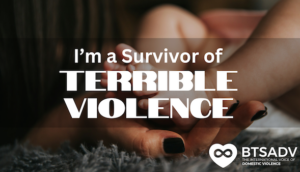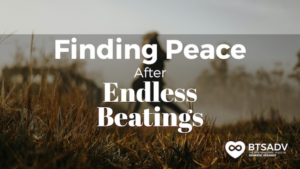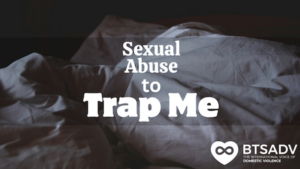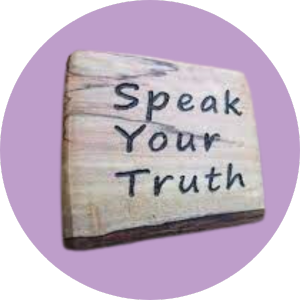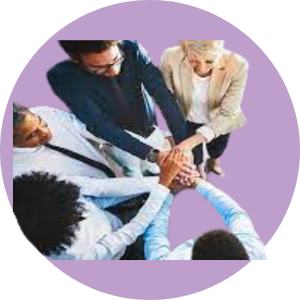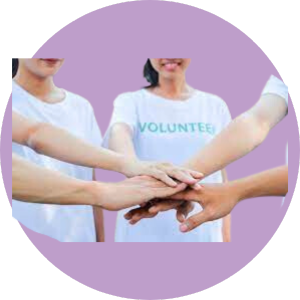
Similar Goals:
As we come to the end of Pride Month in the United States, we have all hopefully been reminded of the important language of inclusion necessary for the continued advancement of members of the LGBTQ+ community. Many of us can remember a time when multinational corporations were not rushing to show their support for these marginalized communities. The LGBTQ+ community has led the charge towards gaining support; controlling the narrative, and eventually empowering the language in a way that forced the acceptance we see today.
Intersectionality is real, and many Domestic Violence survivors have yet to realize the strong connection we should feel towards a group of people that shares many similar characteristics and obstacles. We need to make sure that we are always leading the charge in acceptance, and that we are learning the techniques that have been successful for our LGBTQ+ friends. Most importantly, we must recognize that a large number of victims and survivors are members of the LGBTQ+ community.
Heteronormative Conversations:
So much of the dialog surrounding Domestic Violence can take on a heteronormative slant. This is not a problem exclusive to Domestic Violence. Topics of racial, religious, and ethnic identities and issues also commonly fall into this trap of heteronormativity. We must break out of this narrow viewpoint to really thrive in our desire to include LGBTQ+ allies into our movement and to be better allies to those in the LGBTQ+ movement.
Pride was created as a way to escape the closet and to raise awareness. Visibility has been a prominent reason for many of the advancements that have occurred in recent years. The work of inclusion and equality is never finished, but many heterosexuals began to ally with LGBTQ+ goals when they saw the common bonds. A Gay relative, Lesbian friend, or Transgender co-worker has often provided an example to many people that what unites us is stronger than what divides us.
This visibility should not be limited to issues of marriage, adoption, and health care. As survivors of Domestic Violence, we must make sure that the LGBTQ+ community is heard in the conversation. Too often we paint the abuser and victim narrative in simple male and female terms. This framing completely removes same-sex relationships from the conversation. It also often removes straight men or straight women who were abused in a domestic setting by a member of the same sex, who is not a romantic partner.
Heteronormativity is inherently patriarchal. It presupposes a way a family is supposed to look. These are the same preconceptions that allow Domestic Violence in all of its forms. The more visibility the LGBTQ+ community gains in all conversations, the more we will see that all families are different. The more we stop accepting the outdated narratives surrounding power structure in the home, the more we will empower survivors.
Pride is About Power:
In the Domestic Violence conversation, we are aware that abuse is almost exclusively about control. Somebody with power tries to maintain or expand that power through physical, emotional, financial, or psychological abuse. In short, the purpose of Domestic Violence is to remove the victim’s pride. The abuser intends to humiliate, and subjugate the target. Pride is about power.
Stonewall, often cited as the igniting incident in the fight for Gay Rights should be an event to which many Domestic Violence survivors can relate. After years of having their Gay bars busted by the NYPD, the patrons of the Stonewall Inn fought back against the random threats. The raids of Gay bars were meant to be arbitrary. Just like an abuser will alternate between love-bombing and tantrums, the NYPD would go for long spells without random arrests in Gay bars. That would be followed by sweeps that would find many members of the community put behind bars with ramifications that extended to their jobs and home lives.
These are the patterns of abuse. A person who is always afraid is always on edge. This is one reason that Pride celebrations have proven to be so important. Standing up and refusing to live in fear is a powerful statement against patriarchy, abuse, and inhumane treatment. Beyond gender identification or sexual orientation, all survivors of Domestic Violence can take a message from that. Pride is power. Pride is the very quality the abuser is trying to take from you. Pride is what gives a victim the strength to escape an abusive relationship. Just like it led the brave customers of the Stonewall Inn the courage to stand up for themselves back in 1969, pride is what can lead so many of us to stand up for ourselves in the battlefields of the home.
Learning From Our Allies:
It is no coincidence that Stonewall happened in 1969. Members of the LGBTQ+ community had been watching other groups make great strides through concrete activism for the better part of the decade. Black activists fought for justice, and it directly resulted in the Civil Rights Act and the Voting Rights Act. The American Indian Movement raised awareness to issues faced by a group of people this country and long been ignoring. Women began to demand equal treatment and went a long way towards changing the conversation for future generations. Cesar Chavez and the United Farm Workers fought and won many battles. Pride did not happen in a vacuum.
Again, intersectionality is real. Many of those heroes at Stonewall were also members of other marginalized groups. The first brick was thrown by a Black-Transgender-woman. It is here where our movement against Domestic Violence can learn lessons from Pride. The same methods that the LGBTQ+ community used to raise awareness to its issues and concerns are the same methods that will work in combatting Domestic Violence.
When the NYPD successfully scattered the patrons of a Gay bar, those people were easy to control. When Queer people were kept in the closet and ashamed, they were easy to control. They lost their power. Pride parades and celebrations were ways for LGBTQ+ people to remove the stigma surrounding their lives on their own terms. As survivors of Domestic Violence, we can take so much power from that. The stigma that surrounds abuse permeates through so many of our stories. We can remove that stigma by refusing to stay silent. By sharing your survivor stories with us at BTSADV, you are throwing a metaphorical brick-like those tossed so many years ago at Stonewall. Instead of scattering into the dark allies, we are coming together as a community with pride.
There is no monolith among Domestic Violence survivors. There are women, men, and gender-non-conforming survivors. Survivors are Black, Hispanic, Asian, Native American, and European in ancestry. Catholics, Protestants, Jews, Muslims, Hindus, and all other religious groups suffer from (and members of those groups also commit) abuse. Yes, survivors are Gay, Straight, Transgender, Lesbian, Bisexual, Pansexual, Asexual, and many other classifications. Pride can remind us of the diversity in our ranks. It can also remind us to stand up for ourselves.
The Language of Pride and Phobia:
Quite possibly, Pride has made the greatest impact on society in our language. Recently, even the business networking website LinkedIn added an option to include your gender pronouns on your profile. We are learning to speak in ways that include more people. We are learning to avoid phrases many of us once incorrectly thought were inoffensive. We have started to separate from some of our preconceived notions of masculinity and femininity. With that, we have changed our terminology in these areas.
The way we talk about things matters. Homophobic phrases that serve to emasculate men for sensitivity or compassion only perpetuate the same patriarchal preconceptions of toxic masculinity. We have all heard male survivors of abuse be subjected to these slurs. By challenging transphobic, homophobic, and sexist terminology in our daily lives, we are actually making it easier on survivors of Domestic Violence to reach out for help.
